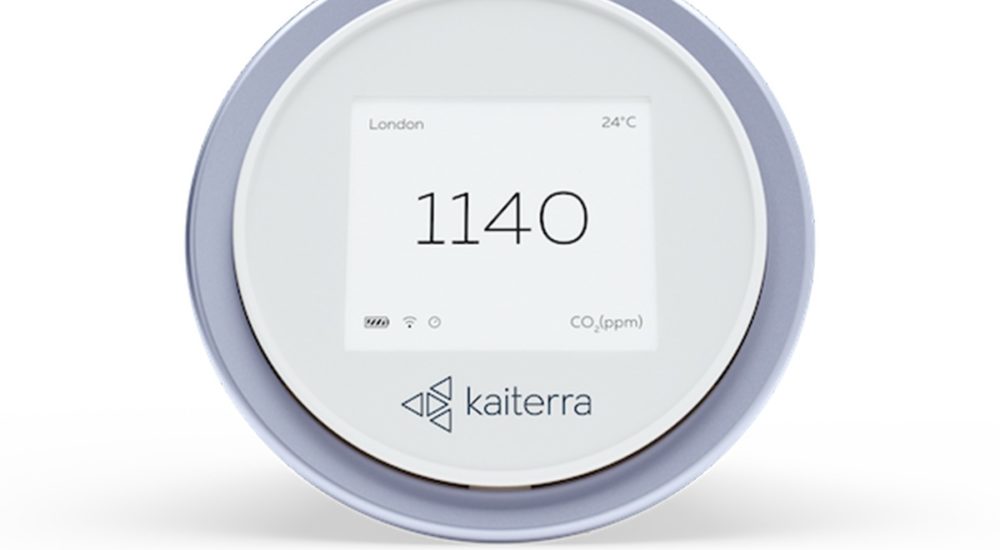Deadly gases like carbon monoxide and radon get most of the attention when we talk about indoor pollutants. But carbon dioxide, a waste product produced by all aerobic organisms when they breathe out, is far more prevalent in our homes and workplaces. The math here is simple: the more people you have in a room or building, the more CO2 you have being expelled in the air. Add poor ventilation to the mix, along with the odd fireplace and gas-burning stove, and you have pathway to pollution.
CO2 can be toxic at high levels, particularly if you have breathing issues. But for most of us, an excess of the gas is far more likely to make us feel fatigued and sluggish. As several studies have shown, that’s not great for productivity.
Kaiterra has made CO2 the focus of its Laser Egg+ CO2. It’s essentially the company’s previous Laser Egg device with CO2 detection added and pushed to the fore. Indeed, it immediately displayed my home’s soaring CO2 levels—a whopping 1,200ppm—as soon as I installed it.
Installing the bell-shaped device takes mere minutes. Plug it in using the supplied USB charger and turn it on, then download the companion app for Android or iOS (if you’re using the latter, Laser Egg+ CO2 is Apple HomeKit compatible) and follow the prompts to connect it to your Wi-Fi network.
As with the Laser Egg 2+, the new device’s readings follow U.S. Environmental Protection Agency standards. CO2 and TVOC (Total Volatile Organic Compounds) levels are displayed as parts per million and PM2.5 as micrograms per Cubic Meter of Air (μg/m3). AQI (Air Quality Index) is displayed as a numerical value corresponding to one of six color-coded categories representing the current level of health concern—ranging from “good” to “hazardous”—for your location. It also shows current weather data, including temperature and humidity for your area.

The app provides the same information, but contextualizes it with with outdoor readings for your locale. When you first launch the app, you see the current AQI for your city along with an hourly breakdown. Swiping right gives you more detail on individual pollutant levels.
To view your indoor levels, you have to choose the Laser Egg device from the bottom of the main screen. As with the outdoor readings, the color-coded AQI score is displayed at the top with a historical breakdown below. Current levels for individual pollutants are shown as well. The app also identifies the current primary indoor pollutant and allows you to select any pollutant to see how it has fluctuated over time.
Typically, the response to any concerning indoor pollutant level is to open the windows and air out the space. Since the outdoor air quality was consistently better than the indoor one, that was never a problem for me. But when the outside air is equally inhospitable, the Laser Egg can tip you off that it’s time to turn on a dehumidifier or air purifier. If you’re a HomeKit user, you can even set it up so that the device turns on one of those HomeKit-compatible appliances automatically.
The Laser Egg+ CO2 also works with IFTTT. Some of the compatible applets will notify you when the indoor air quality is poor—though the app itself provides notifications—and others track air quality readings to a Google spreadsheet and change the color of your smart lights when the air quality is bad.
Verdict
The Laser Egg+ CO2 doesn’t add much to the Laser Egg 2+ except carbon dioxide detection, but seeing as the lack of that feature was my main criticism of the older device, this upgrade is fairly big deal. I can’t say that guarantees it will help improve your productivity, but it does make the Laser Egg a more well-rounded air-quality monitor, and that’s enough to recommend it.
Kaiterra’s Laser Egg 2+ CO2 provides easy to understand air quality readings, so you can reduce indoor pollutants that could affect your health and comfort.
Pros
- Monitors both indoor and outdoor air quality
- App provides current and historical readings
- Apple HomeKit compatible
Cons
- Does not detect carbon monoxide or radon
- Does not work with Amazon Alexa or Google Assistant
Source: techhive.com




































